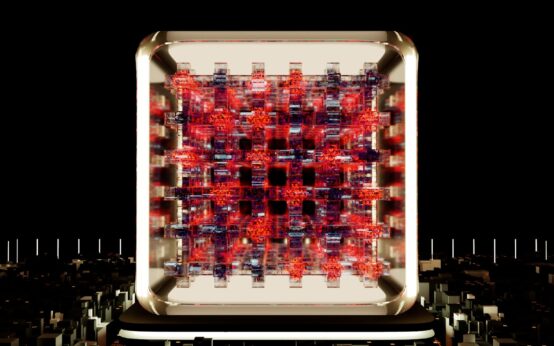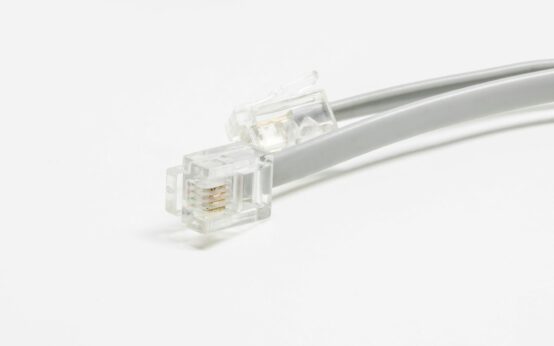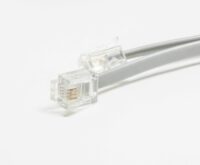You’re Staring at the Chart, But What Are You Really Seeing?
Let’s be honest. The default chart on your favorite crypto exchange is… basic. It’s like trying to navigate a new city with a map drawn on a napkin. You can see the major streets, sure, but you’re missing the alleyways, the one-way signs, and the hidden gems where the real opportunities are. If you’re serious about trading, you need a professional-grade GPS. That’s where this guide to using TradingView for crypto comes in. It’s the single most powerful tool you can add to your arsenal, transforming you from a passive observer into an active, informed analyst.
TradingView isn’t just a charting platform; it’s a complete ecosystem. It’s a social network for traders, a testing ground for strategies, and a command center for your entire trading operation. Forget squinting at simplistic line graphs. We’re about to unlock a world of professional-grade tools that can help you spot trends, manage risk, and execute trades with a level of confidence you didn’t think was possible. This isn’t about finding a magic bullet. It’s about learning to use the best tools for the job.
Key Takeaways
- Beyond the Basics: TradingView offers far superior charting tools, indicators, and customization compared to standard exchange interfaces.
- Actionable Analysis: Learn to use essential indicators like RSI, MACD, and Moving Averages to understand market momentum and potential reversals.
- Strategic Automation: Set up complex alerts on price, indicators, or trendlines so you never miss a critical market move, even when you’re away from your screen.
- Risk-Free Practice: Utilize TradingView’s Paper Trading feature to test strategies with real-time data without risking a single dollar.
- Customization is King: From creating custom indicators with Pine Script to connecting your brokerage account for direct trading, TradingView adapts to your workflow.

So, What Exactly is TradingView and Why Should You Care?
At its core, TradingView is a cloud-based charting and social networking platform. Think of it as Google Maps for financial markets. It pulls in data from hundreds of exchanges and data feeds—not just for crypto, but for stocks, forex, and commodities too. This is its first major advantage. While your exchange only shows you its own order book and price data, TradingView aggregates data from multiple sources (like Binance, Coinbase, KuCoin, etc.), giving you a much more comprehensive view of the market for a specific pair, say BTC/USDT.
But it’s so much more than just pretty charts. Here’s the real difference:
- The Toolbox: It comes loaded with hundreds of pre-built indicators, drawing tools, and analysis instruments. The stuff pros use. Most exchanges give you a hammer and a screwdriver; TradingView gives you the entire workshop.
- The Community: There’s a massive social component. You can see and comment on other traders’ analyses, share your own charts, and get a feel for market sentiment directly from the source. It’s a global trading floor, and it’s open 24/7.
- The Flexibility: It works in your browser on any computer. No heavy software to download. There are also fantastic mobile and desktop apps, so your charts and alerts are always with you.
For a crypto trader, this is non-negotiable. The crypto market is notoriously volatile and fragmented. Having a single, powerful platform that consolidates data, provides elite tools, and allows you to test ideas is an incredible edge.
Setting Up Your Command Center: The First Steps
Getting started is straightforward. Head to the TradingView website and sign up. You can start with a free account, and honestly, the free plan is incredibly powerful. It gives you access to most of the core charting tools and a limited number of indicators per chart. As you get more serious, you might consider a paid plan (Pro, Pro+, or Premium) to get more indicators, more alerts, and a multi-chart layout. But don’t rush into it. Learn the ropes on the free plan first.
Once you’re in, your first task is to set up your workspace. Don’t just accept the defaults! Make it yours. Here’s a quick checklist:
- Find Your Pair: Use the search bar at the top to find the crypto you want to analyze, like `BTCUSD` or `ETHUSDT`. You’ll see options from different exchanges. It’s often best to pick one with high volume, like from Binance or Coinbase.
- Choose Your Theme: Do you prefer a dark screen or a light one? Click the gear icon on the chart settings. In the `Appearance` tab, you can change everything from the background color to the color of your candlesticks. A visually comfortable chart is one you can analyze for hours.
- Save Your Layout: Once you have a look you like, with a few favorite indicators loaded, save it! Click on the cloud icon in the top right. Give it a name like “Crypto Main” or “Altcoin Scalping.” This way, you can instantly pull up your preferred setup for any asset.
Treat this setup process like a pilot getting their cockpit ready before takeoff. Everything should be where you expect it, clean, and optimized for performance.
The Chart is Your Canvas: Mastering the Essentials
The heart of TradingView is, of course, the chart. It’s where the story of price unfolds. To read that story, you need to understand the language.

Reading the Candlesticks
Those red and green bars aren’t just random blocks. Each candlestick tells you a four-part story of a specific time period (e.g., one hour, one day):
- The Open: Where the price started at the beginning of the period.
- The Close: Where the price ended.
- The High: The highest point the price reached.
- The Low: The lowest point the price reached.
The ‘body’ of the candle is the part between the open and close. If the close is higher than the open, the candle is typically green (bullish). If the close is lower, it’s red (bearish). The thin lines, called ‘wicks’ or ‘shadows’, show the high and low. Long wicks can indicate a lot of indecision or a battle between buyers and sellers. Learning to read these patterns is a foundational skill in technical analysis.
Timeframes are Everything
At the top-left of the chart, you’ll see a dropdown for the timeframe (1m, 5m, 1H, 4H, 1D, etc.). This is your zoom lens. A day trader might live on the 5-minute and 15-minute charts to catch small, rapid moves. A swing trader looking to hold for days or weeks will focus on the 4-hour and daily charts to identify larger trends. A long-term investor might only check the weekly chart. There is no ‘best’ timeframe. The right one depends entirely on your trading strategy. The magic happens when you use them together—a practice called multi-timeframe analysis. Spot a bullish trend on the daily chart, then zoom into the 1-hour chart to find a perfect entry point.
Volume: The Fuel for the Fire
Price can’t move without volume. The volume bars at the bottom of your chart show how much of an asset was traded during that period. It’s a measure of conviction. A big price move on high volume is significant; it shows a lot of money and interest is behind the move. A big price move on very low volume is suspicious; it could be a fakeout or easily reversed. Always, always check the volume. A price trend without supporting volume is a trend you shouldn’t trust.
Unlocking Deeper Insights: Your Guide to Indicators & Tools
Okay, you’ve mastered the basics. Now it’s time to add layers to your analysis. This is where TradingView truly shines, offering a near-endless library of indicators and drawing tools. Don’t be intimidated! You don’t need 20 indicators cluttering your chart. You just need to master a few key ones.
Must-Have Indicators for Any Crypto Trader
Indicators are essentially mathematical calculations based on price and/or volume, displayed visually on your chart. They help simplify complex price action and give you signals.
- Moving Averages (MA, EMA): These are the workhorses of technical analysis. They smooth out price data to show you the underlying trend direction. An Exponential Moving Average (EMA) gives more weight to recent prices, making it more responsive. A common strategy is to use two EMAs, like the 21-period and the 55-period. When the shorter-term EMA crosses above the longer-term one, it can signal the start of an uptrend, and vice-versa.
- Relative Strength Index (RSI): This is a momentum oscillator. It moves between 0 and 100 and tells you how overbought (typically above 70) or oversold (typically below 30) an asset is. It’s great for spotting potential reversals. If the price is making a new high but the RSI isn’t, that’s a ‘bearish divergence’—a classic warning sign that momentum is fading.
- Moving Average Convergence Divergence (MACD): The MACD (pronounced “Mac-Dee”) is another momentum indicator that shows the relationship between two moving averages. It consists of the MACD line, a signal line, and a histogram. When the MACD line crosses above the signal line, it’s a bullish signal. It’s excellent for confirming the strength and direction of a trend.
Drawing Tools Demystified
The tools on the left-hand toolbar let you draw directly on your chart. This isn’t just doodling; it’s about defining the structure of the market.
- Trend Lines: The most basic but powerful tool. Connect two or more lows in an uptrend, or two or more highs in a downtrend. This line now acts as dynamic support or resistance. A break of a significant trend line is a major event.
- Fibonacci Retracement: Don’t let the fancy name scare you. This tool helps you predict potential support and resistance levels. You draw it from the low to the high of a major price swing (or high to low in a downtrend). It will then project key levels (23.6%, 38.2%, 61.8%) where the price is likely to pull back and find support before continuing the trend. It’s shockingly effective because so many traders are watching these same levels.
- Horizontal Ray/Line: Use this to mark key support and resistance levels—areas where the price has repeatedly stalled or bounced. These are critical zones of supply and demand.
Pro Tip: Don’t just slap indicators on a chart. Understand what question each one answers. RSI asks, “Is the current move getting exhausted?” Moving Averages ask, “What is the general direction of the trend?” Use them as a team to build a cohesive story about the price action.
Advanced Features for the Serious Trader
Once you’re comfortable with charts and indicators, you can explore the features that truly separate the amateurs from the pros.
Setting Up Powerful Alerts on TradingView for Crypto
This might be the most valuable feature on the entire platform. You can’t be glued to your screen 24/7, especially in the non-stop crypto market. Alerts are your personal market-watching robot. But don’t just set a simple price alert. Get creative!
- Set an alert for when an EMA crosses another.
- Set an alert for when the RSI on the 4-hour chart enters oversold territory.
- Draw a critical trend line and set an alert for the moment the price crosses it.
You can receive these alerts via pop-up, email, or even a text message. They free you from the screen and ensure you only engage with the market when your specific conditions are met.
A Glimpse into Pine Script
At the bottom of your chart, you’ll see a tab called ‘Pine Editor’. This is TradingView’s own programming language. It allows you to create your own custom indicators or modify existing ones. While this is an advanced topic, it’s good to know it exists. You can find thousands of free, community-built scripts in the ‘Indicators’ library. Want an indicator that colors your candles based on RSI momentum? There’s a script for that. It’s the ultimate in customization.
Paper Trading: Practice Without the Pain
Have a new strategy you want to try? Don’t risk real money. At the bottom of the chart, click on the ‘Trading Panel’ and connect to ‘Paper Trading’. TradingView will give you a simulated account with $100,000 to practice with. You can place buy and sell orders using real-time market data. It’s the perfect way to build confidence, iron out the kinks in your strategy, and learn the mechanics of placing orders without any financial risk.
Connecting Exchanges and Trading Directly
This is the final step in creating a unified command center. TradingView allows you to connect directly to a number of crypto exchanges (like Binance, Bybit, OKX, and more) via their API. By connecting your exchange account in the ‘Trading Panel’, you can execute trades directly from your TradingView chart. No more switching back and forth between your analysis screen and your exchange’s execution window. You see a setup on your chart, place the order right there, and even manage your stop-loss and take-profit levels visually by dragging them on the chart. It streamlines the entire process, reducing the chance of errors and saving precious seconds—which can make all the difference in a fast-moving market.

Conclusion: Your Chart, Your Rules
Mastering TradingView for crypto is a journey, not a destination. It’s a powerful instrument, and like any instrument, it takes practice to play it well. Start simple. Master one or two indicators. Get comfortable with drawing trend lines. Use paper trading relentlessly. The goal isn’t to find a magic combination of settings that predicts the future. The goal is to build a systematic, repeatable process for analyzing the market, identifying opportunities, and managing risk. TradingView provides every single tool you need to do just that. You’ve moved beyond the napkin map. You now have the full satellite GPS. It’s time to start exploring.
FAQ
Is the free version of TradingView good enough for crypto?
Absolutely. For beginners and even many intermediate traders, the free plan is fantastic. It gives you all the essential charting tools, a massive library of indicators (though you’re limited to 3 per chart), and drawing tools. You can get very far before you ever feel the need to upgrade. The main reasons to upgrade are for more indicators per chart, more saved layouts, and more active alerts.
What are the best indicators on TradingView for crypto specifically?
While the classics like RSI, MACD, and EMAs are essential for any market, some indicators are particularly useful for the volatile crypto space. Consider exploring Volume Profile Visible Range (VPVR), which shows where the most volume has been traded at specific price levels, revealing key support/resistance zones. The Supertrend indicator is also popular for its clear-cut trend-following signals. The key is not to find the ‘best’ one, but to find the ones that best complement your personal trading style.
Can I use TradingView on my phone to trade crypto?
Yes, the TradingView mobile app for both iOS and Android is excellent. It syncs seamlessly with your desktop layouts, alerts, and watchlists. While detailed analysis is often easier on a larger screen, the app is perfect for checking your positions, managing trades, and getting alerts on the go. If you’ve connected your exchange account, you can even execute trades directly from the mobile app, making it a fully functional trading platform in your pocket.



 Backtest Crypto Trading Strategies: A Complete Guide
Backtest Crypto Trading Strategies: A Complete Guide  NFT Standards: A Cross-Chain Guide for Creators & Collectors
NFT Standards: A Cross-Chain Guide for Creators & Collectors  Decentralized Storage: IPFS & Arweave Explained Simply
Decentralized Storage: IPFS & Arweave Explained Simply  How to Calculate Cryptocurrency Taxes: A Simple Guide
How to Calculate Cryptocurrency Taxes: A Simple Guide  Your Guide to Music NFTs & Top Platforms for 2024
Your Guide to Music NFTs & Top Platforms for 2024  What Are Soulbound Tokens (SBTs)? A Guide to Your Web3 ID
What Are Soulbound Tokens (SBTs)? A Guide to Your Web3 ID  Backtest Crypto Trading Strategies: A Complete Guide
Backtest Crypto Trading Strategies: A Complete Guide  NFT Standards: A Cross-Chain Guide for Creators & Collectors
NFT Standards: A Cross-Chain Guide for Creators & Collectors  Decentralized Storage: IPFS & Arweave Explained Simply
Decentralized Storage: IPFS & Arweave Explained Simply  How to Calculate Cryptocurrency Taxes: A Simple Guide
How to Calculate Cryptocurrency Taxes: A Simple Guide  Your Guide to Music NFTs & Top Platforms for 2024
Your Guide to Music NFTs & Top Platforms for 2024  What Are Soulbound Tokens (SBTs)? A Guide to Your Web3 ID
What Are Soulbound Tokens (SBTs)? A Guide to Your Web3 ID